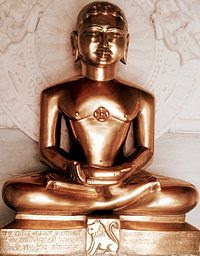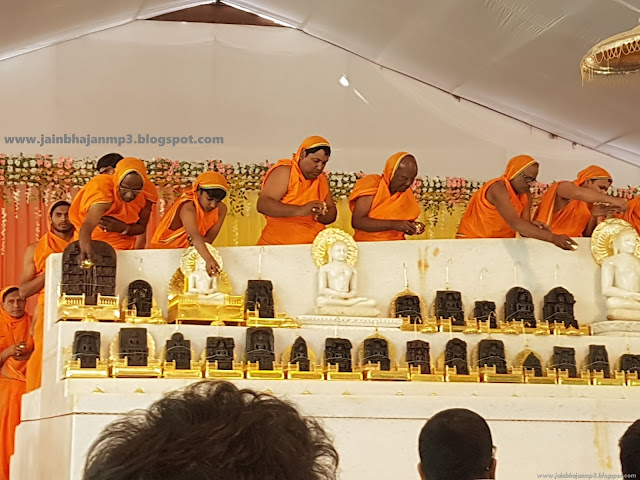Jain Bhajan - About
Jain Bhajan
Jain Bhajan's sounds and words have great effect on mind, body and soul. So the sounds, words and music you listen to has a deep effect on your thought process and your health as well.
The Bhajans presented here are downloaded from various sources like YouTube, Jain Websites and Jain CDs. The purpose of presenting the Jain Bhajans here is pure and non-profit.
The Bhajans presented here are downloaded from various sources like YouTube, Jain Websites and Jain CDs. The purpose of presenting the Jain Bhajans here is pure and non-profit.
We Provide best Jain Bhajan's as per your demand.Our aim is to provide you best Jain Bhajan's. Everybody want's to listen Jain Bhajan and we are the best who upload clear and good Jain Bhajan's.We provide all Jain Bhajan's Mp3 and Video song.Jain Bhajan free download from here.
Ideal way of doing Swadhyay or listening to Jain Scriptures
- Wear clean clothes, wash your hands and feet and if you have eaten something make sure to gargle and clean your mouth.
- Choose a quiet place so you can concentrate on the swadhyay. Turn off your mobile. Make sure the time is appropriate for the particular shastra swadhyay.
- Start with mangalacharan of the shastra you are listening to. For example for Ratankarand Shravakachaar recite "Namah Shri Vardhamanaya nirdhoot kalilatmane, saalokanaam trilokanaam yad vidya darpanayate".
- After the swadhya is over, recite Jinvaanui Stuti followed by Kayotsarga (9 times namokar mantra recitation)
Jainism
Jainism is an Indian religion that prescribes a path of non-violence towards all living beings. Its philosophy and practice emphasize the necessity of self-effort to move the soul toward divine consciousness and liberation. Any soul that has conquered its own inner enemies and achieved the state of supreme being is called a jin. The ultimate status of these perfect souls is called siddha. Ancient texts also refer to Jainism as shraman dharma (self-reliant) or the "path of the nirganthas" (those without attachments or aversions).
Jain doctrine teaches that Jainism has always existed and will always exist.Like most ancient Indian religions, Jainism may have its roots in the Indus Valley Civilization, reflecting native spirituality prior to the Indo-Aryan migration into India.Other scholars suggested the shramana traditions were separate and contemporaneous with Indo-Aryan religious practices of the historical Vedic religion.Several historians date the foundation of the present form of Jainism to sometime between the 9th and the 7th century BCE.
Contemporary Jainism is a religious minority with 4.2 million followers in India and immigrant communities in Belgium, the United States, Hong Kong, Japan, Singapore and elsewhere.Jains have the highest degree of literacy for a religious community in India.Several Jain libraries are the oldest in the country.
Jain doctrine teaches that Jainism has always existed and will always exist.Like most ancient Indian religions, Jainism may have its roots in the Indus Valley Civilization, reflecting native spirituality prior to the Indo-Aryan migration into India.Other scholars suggested the shramana traditions were separate and contemporaneous with Indo-Aryan religious practices of the historical Vedic religion.Several historians date the foundation of the present form of Jainism to sometime between the 9th and the 7th century BCE.
Contemporary Jainism is a religious minority with 4.2 million followers in India and immigrant communities in Belgium, the United States, Hong Kong, Japan, Singapore and elsewhere.Jains have the highest degree of literacy for a religious community in India.Several Jain libraries are the oldest in the country.



Comments
Post a Comment